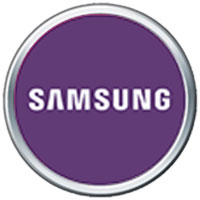
Apple MacBook Problems and Repair Solutions
Apple MacBooks are renowned for their sleek design, powerful performance, and reliability. However, like any electronic device, they are not immune to issues. From hardware malfunctions to software glitches, MacBook users may encounter problems that disrupt their workflow. This article explores some of the most common MacBook problems and provides practical repair solutions to help you get your device back in top shape.
1. Battery Draining Quickly
The Problem
One of the most frequent complaints among MacBook users is rapid battery drain. Even newer models can experience reduced battery life due to heavy usage, background processes, or aging batteries.
Causes
- High resource usage: Running resource-intensive applications like video editors or games.
- Background processes: Apps or processes consuming power without user awareness.
- Battery wear: Over time, lithium-ion batteries degrade, holding less charge.
- Software issues: macOS bugs or misconfigured settings, such as high screen brightness.
Repair Solutions
- Check battery usage: Go to System Settings > Battery (or System Preferences > Energy Saver on older macOS versions) to identify power-hungry apps. Close unnecessary applications or processes.
- Optimize settings: Lower screen brightness, disable Bluetooth when not in use, and enable Low Power Mode (available on macOS Monterey and later).
- Update macOS: Ensure your MacBook is running the latest macOS version to benefit from battery optimization fixes.
- Battery health check: Navigate to System Settings > Battery > Battery Health to check the battery’s condition. If it says "Service Recommended," consider replacing the battery.
- Professional repair: Visit an Apple Store or authorized service provider for battery replacement, especially if the MacBook is under warranty or AppleCare.
2. Overheating
The Problem
MacBooks, particularly older models or those used for demanding tasks, can overheat, leading to performance throttling or unexpected shutdowns.
Causes
- Dust buildup: Accumulated dust in vents or fans restricts airflow.
- Heavy workloads: Running multiple intensive applications simultaneously.
- Poor ventilation: Using the MacBook on soft surfaces like beds or couches blocks vents.
- Faulty thermal sensors: Hardware issues causing inaccurate temperature readings.
Repair Solutions
- Improve ventilation: Use your MacBook on a hard, flat surface to ensure proper airflow. Consider a laptop cooling pad for extended use.
- Clean the interior: If comfortable, open the MacBook (following iFixit guides) to clean dust from fans and vents using compressed air. Alternatively, seek professional cleaning.
- Monitor activity: Use the Activity Monitor (found in Applications > Utilities) to identify and close apps consuming excessive CPU or memory.
- Reset SMC: Resetting the System Management Controller (SMC) can resolve thermal issues. For Intel-based MacBooks, shut down, then press Shift + Control + Option + Power for 10 seconds before restarting. For Apple Silicon MacBooks, a simple restart often resets SMC-like functions.
- Professional diagnosis: If overheating persists, consult an Apple technician to check for faulty fans or thermal sensors.
3. Keyboard Issues (Butterfly Keyboard)
The Problem
MacBooks from 2015 to 2019 with butterfly keyboards are notorious for sticky, unresponsive, or repeating keys, causing typing frustrations.
Causes
- Debris accumulation: Dust or crumbs under keys interfere with the butterfly mechanism.
- Design flaws: The butterfly keyboard’s low-travel design is prone to failure.
- Wear and tear: Prolonged use can degrade the delicate mechanism.
Repair Solutions
- Clean the keyboard: Use compressed air to blow out debris. Hold the MacBook at a 75-degree angle and spray in a zigzag pattern, as recommended by Apple.
- Keyboard Service Program: Apple offers a free repair program for eligible MacBooks with butterfly keyboards. Check Apple’s website to confirm if your model qualifies and schedule a repair.
- External keyboard: As a temporary workaround, connect an external USB or Bluetooth keyboard.
- Replacement: For non-eligible models, consider replacing the keyboard at an authorized service center, though this can be costly due to the top case replacement required.
4. Screen Issues (Flickering, Black Screen, or "Flexgate")
The Problem
Users may encounter screen flickering, black screens, or uneven backlighting, particularly in MacBook Pros from 2016–2018, often linked to the "Flexgate" issue.
Causes
- Flexgate: A fragile display cable in certain MacBook Pros wears out over time, causing backlight failure or flickering.
- Software glitches: macOS bugs or graphics driver issues.
- Hardware failure: Faulty display components or loose connections.
- External display conflicts: Issues with connected monitors or adapters.
Repair Solutions
- Reset NVRAM/PRAM: Restart your MacBook and hold Command + Option + P + R until you hear the startup chime twice (Intel-based Macs). This can resolve software-related display issues.
- Update macOS and drivers: Ensure your system and graphics drivers are up to date via System Settings > Software Update.
- Flexgate repair program: For eligible 13-inch MacBook Pros (2016), Apple offers free display backlight repairs. Check Apple’s support page for details.
- Avoid excessive lid movement: Minimize opening and closing the lid to reduce strain on the display cable until repaired.
- Professional repair: For non-eligible models, visit an Apple Store or third-party repair shop to replace the display cable or screen assembly.
5. Slow Performance or Freezing
The Problem
A sluggish MacBook or frequent freezing can hinder productivity, especially on older models or those with low storage.
Causes
- Insufficient storage: A nearly full startup disk slows down macOS.
- Outdated macOS: Older operating systems lack performance optimizations.
- Too many startup items: Apps launching at boot consume resources.
- Hardware limitations: Aging components struggle with modern software demands.
Repair Solutions
- Free up storage: Go to About This Mac > Storage > Manage to offload files to iCloud, empty the Trash, or delete unused apps. Aim to keep at least 10–20% of your disk free.
- Update macOS: Install the latest compatible macOS version for performance improvements.
- Reduce startup items: Navigate to System Settings > General > Login Items to disable unnecessary apps launching at startup.
- Run Disk Utility: Open Disk Utility (in Applications > Utilities) and run First Aid to check and repair disk errors.
- Upgrade hardware: For older MacBooks, consider upgrading to an SSD (if not already equipped) or increasing RAM (on models where possible). Consult a professional for compatibility.
- Reinstall macOS: As a last resort, back up your data and reinstall macOS via Recovery Mode (restart and hold Command + R).
6. Wi-Fi Connectivity Issues
The Problem
MacBooks may struggle to connect to Wi-Fi, experience slow speeds, or drop connections frequently.
Causes
- Network interference: Crowded Wi-Fi channels or physical obstructions.
- Software bugs: macOS or driver issues affecting the Wi-Fi module.
- Hardware failure: Faulty Wi-Fi card or antenna.
- Router issues: Incompatible or outdated router firmware.
Repair Solutions
- Restart devices: Restart your MacBook and router to refresh the connection.
- Forget and reconnect: Go to System Settings > Wi-Fi, select your network, click Forget This Network, and reconnect with the password.
- Update macOS: Ensure your MacBook has the latest Wi-Fi driver updates via Software Update.
- Change Wi-Fi channel: Access your router’s settings to switch to a less congested channel (e.g., 1, 6, or 11 for 2.4 GHz).
- Reset network settings: Delete Wi-Fi preferences by removing files in /Library/Preferences/SystemConfiguration/ (back up first) and restart.
- Professional repair: If issues persist, a technician can diagnose potential hardware problems with the Wi-Fi card or antenna.
7. Trackpad Not Responding
The Problem
The trackpad may become unresponsive, erratic, or fail to register clicks, affecting navigation.
Causes
- Software glitches: macOS bugs or misconfigured trackpad settings.
- Dirt or debris: Accumulated grime under the trackpad.
- Battery swelling: A swollen battery can press against the trackpad, causing malfunctions.
- Hardware failure: Faulty trackpad or loose connections.
Repair Solutions
- Adjust trackpad settings: Go to System Settings > Trackpad to tweak sensitivity or reset to default settings.
- Clean the trackpad: Gently clean the trackpad surface with a microfiber cloth and isopropyl alcohol to remove oils or debris.
- Reset SMC: Reset the System Management Controller (as described in the overheating section) to address trackpad issues.
- Check for battery swelling: If the trackpad feels uneven or raised, shut down the MacBook and seek professional repair immediately, as battery swelling is a safety hazard.
- Professional repair: A technician can replace the trackpad or address underlying hardware issues.
General Tips for MacBook Maintenance
- Regular backups: Use Time Machine or iCloud to back up data regularly to prevent loss during repairs.
- Keep macOS updated: Updates often include bug fixes and performance improvements.
- Use Apple diagnostics: Restart your MacBook and hold the D key to run Apple Diagnostics (or Apple Hardware Test on older models) to identify hardware issues.
- Consider AppleCare: If your MacBook is still under warranty or AppleCare, repairs may be free or discounted.
- Avoid DIY repairs unless experienced: MacBooks are complex, and improper repairs can cause further damage. Seek professional help for intricate issues.
While MacBooks are built to last, they can encounter issues ranging from battery problems to hardware failures. By understanding common problems and their solutions, you can troubleshoot effectively and extend your device’s lifespan. For minor issues, software updates and user-level fixes often suffice, but persistent or complex problems may require professional attention. Always prioritize authorized repair providers to ensure quality service and genuine parts. With proper care and timely repairs, your MacBook can continue to deliver exceptional performance for years to come.




